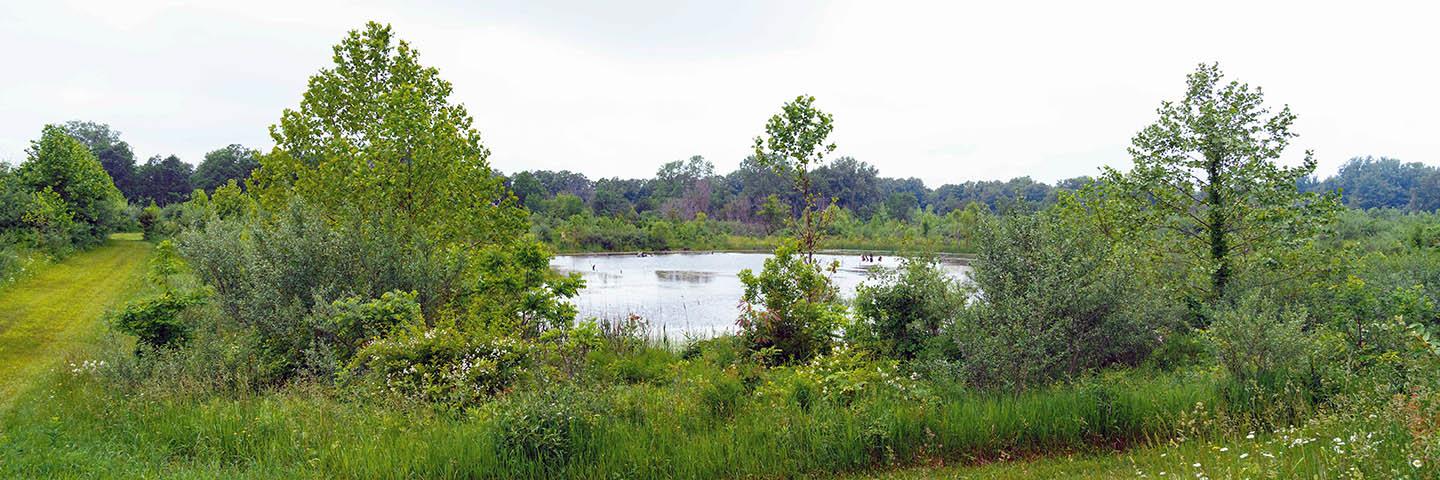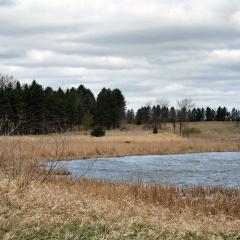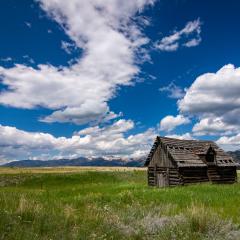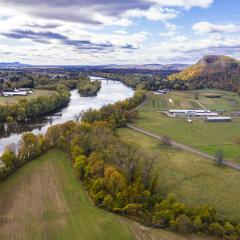NRCS is streamlining its Agricultural Conservation Easement Program to improve the program for landowners and partners. Learn more about these changes.
Benefits
Wetland Reserve Easements component of the Agricultural Conservation Easement Program provides habitat for migratory waterfowl and other wetland dependent wildlife, including threatened and endangered species; improves water quality by filtering sediments and chemicals; reduces flooding; recharges groundwater; protects biological diversity; and provides opportunities for educational, scientific and limited recreational activities.
Who is eligible?
Eligible landowners include:
- Owners of privately held land including land that is held by American Indian tribes.
- All landowners who meet the adjusted gross income (AGI) limitations, including all members of landowner-legal entities, and those compliant with the Highly Erodible Land and Wetland Conservation provisions of the Food Security Act of 1985.
What land is eligible?
Land eligible for wetland reserve easements includes privately held farmed or converted wetlands that were previously degraded due to agricultural uses and can be successfully and cost-effectively restored. NRCS will prioritize applications based the easement’s potential for protecting and enhancing habitat for migratory birds and other wildlife.
How does it work?
To enroll land through wetland reserve easements, NRCS enters into purchase agreements with eligible private landowners or Indian tribes that include the right for NRCS to develop and implement a Wetland Reserve Plan of Operations (WRPO). This plan will detail practices to help restore, protect and enhance the wetlands functions and values.
Wetland Reserve enrollment options include:
- Permanent Easements – Permanent easements are conservation easements in perpetuity. NRCS pays 100 percent of the easement value for the purchase of the easement. Additionally, NRCS pays between 75 to 100 percent of the restoration costs.
- 30-year Easements – 30-year easements expire after 30 years. Under 30-year easements, NRCS pays 50 to 75 percent of the easement value for the purchase of the easement. Additionally, NRCS pays between 50 to 75 percent of the restoration costs.
- Term Easements - Term easements are easements that are for the maximum duration allowed under applicable State laws. NRCS pays 50 to 75 percent of the easement value for the purchase of the term easement. Additionally, NRCS pays between 50 to 75 percent of the restoration costs.
- 30-year Contracts – 30-year contracts are only available to enroll acreage owned by Indian tribes and program payment rates are commensurate with 30-year easements.
For all Wetland Reserve Easements options, NRCS pays all costs associated with recording the easement in the local land records office, including recording fees, charges for abstracts, survey and appraisal fees and title insurance.
Required Training
EPD Area Wide Market Analysis: Statement of Work Overview — This is a required training for all appraisers who will be conducting an Area Wide Market Analysis for the NRCS.
WRE and WREP Success Stories Across the Country
The WRE and WREP interactive map showcases successful projects across the country restoring wetlands functions and values.









